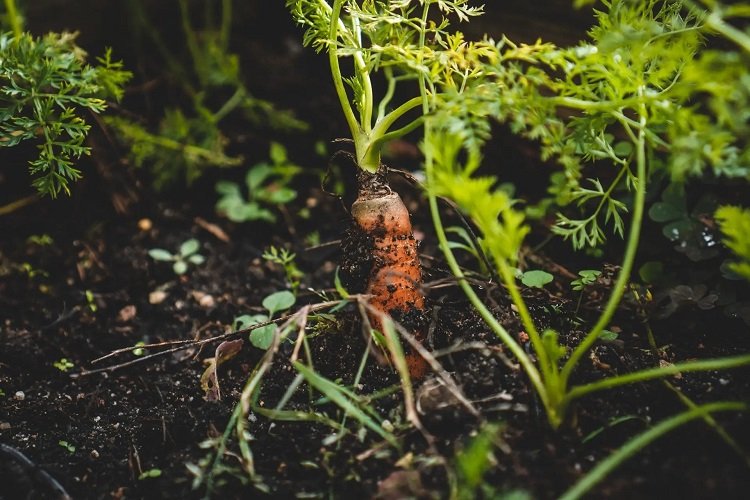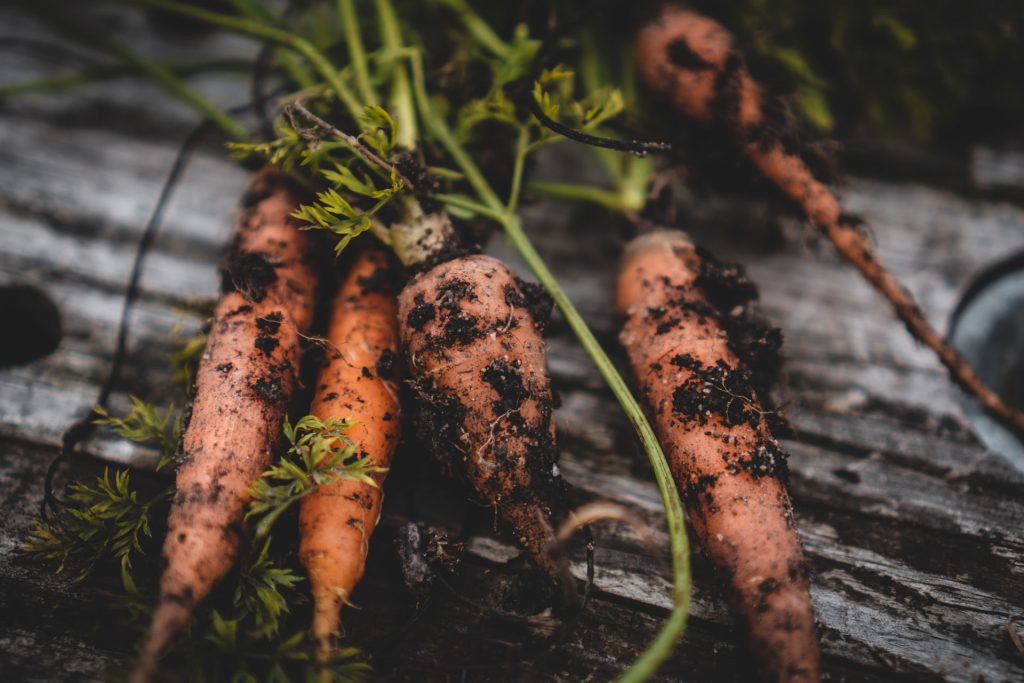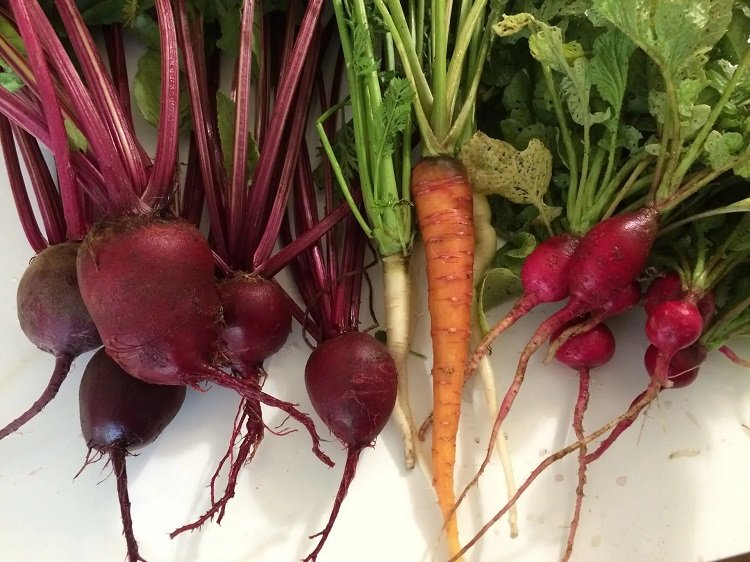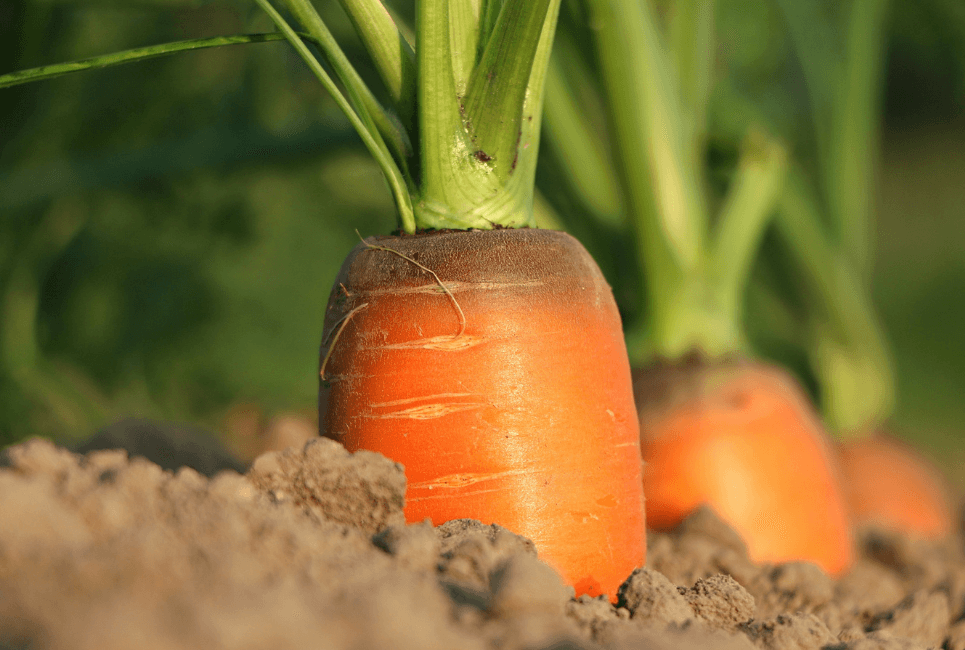- Best Stump Killer To Consider for Your Yard - January 5, 2024
- The 7 Best Spading Fork Options - December 21, 2023
- Best Head Planters – Top 24 Options You Will Love - December 16, 2023
So you’ve decided to grow carrots for the first time — what a treat you have ahead of you! The act of growing carrots is a reward all on its own, and at the end you’ll have a bountiful harvest of tasty root vegetables to munch on.
If you’ve never grown carrots before, you should know that there’s no need to be nervous. Once you’ve gotten into the swing of growing them, you’ll be a pro in no time. But before you get out and planting, why should you put in the effort in the first place, anyway?
Why You Should Grow Carrots
Not only are they great for you, but these are great for beginners to grow in their gardens — and fascinating to watch grow. They’re easy to care for, and are a fun gardening project to get your kids involved, too.
Carrots are chock-full of fiber, potassium, beta carotene, and antioxidants to help keep you healthy, and their brilliant color will look amazing on any plate. Plus, anything grown in your very own garden will always be worth the effort.
They go in countless recipes from soups to side dishes — you can even turn them into fries! Oh, but enough about all the tasty things you can do with your carrots once they’re grown — let’s get right down to it!

Getting Started
To get started, you’ll need a few things, just like any other gardening project. All you’ll need is:
- Carrot seeds
- Gardening gloves
- Pots (optional)
Once you’ve got a little gear, you’re ready to get out in the garden! I would also recommend a good sun hat, no matter what season you’re planting your carrots in. Maybe that’s just because I burn so easily, though!
Getting seeds ready
Thankfully, carrot seeds don’t need special prep before going in your garden, and you can just put them right in the ground.
However, if you’d like to speed up the growing process, you can germinate the seeds to give them a head start. Begin by starting the process three or four days before you plan on planting them by soaking your seeds in water for about an hour, then placing them in a folded damp paper towel in an airtight container for about five days.
You don’t have to prime your carrot seeds, but it can come in handy if you’re planting them in the summer.
Prepping your garden
You should start working your soil in the very early spring — carrots do better in cooler weather. You should plant your seeds when the soil is workable again, which can be as early as two or three weeks before the final frost of the season.
However, where you live can affect how your carrots grow. If you’re in a warmer climate like myself, you might want to try growing your carrots in the fall, stretching into the winter. If you don’t get any snow, that’s the way to go!
You’ll want to make sure your garden is free of any debris like rocks and large pieces of wood before you sow your carrot seeds. Especially underground — if carrots run into anything while growing, they’ll split to grow around the rock, for example, it runs into.
I like to grow my carrots in a raised bed — that way, I can make sure there aren’t any rocks or pipes under the ground that might cause my carrots to become deformed.
Growing Carrots: How to Grow and Care for Carrots
And now comes the fun part: actually planting your seeds! Since carrot seeds are so tiny, it will be difficult to get them in perfect rows, so don’t sweat it if your carrots grow in odd places — they’ll taste just as good either way!
Spread your seeds in a row as best you can, just barely covering them with about 1/4 of an inch of soil.
Your carrots will sprout within three weeks, and when they grow to be about an inch or two tall, you should thin them out so they’re about 1 1/2 to 2 inches apart. Pinching the seedlings at the soil line is my way of making sure the roots aren’t hurt when I move them.
After they’re in the ground and properly spaced, all you really have to do is keep your garden weed-free. Aside from basic care, all you have to do is wait for them to mature.

How long they take to grow
Carrots take, on average, about 50 to 75 days to grow from seed. This can vary from type to type, and each seed packet should have an estimated growth time.
Your carrots should be done when the tops of your carrots have grown to the expected diameter. You can check by feeling around just below the soil line — the only other test is to pick one of the carrots and try it. You shouldn’t ever leave the tops of the actual carrot itself exposed to the sun, because that can make them turn green and taste bitter.
But we must advise against harvesting your carrots too soon! Harvesting earlier won’t give you baby carrots. Carrots that are picked too soon will be bland — baby carrots are actually just larger, fully grown carrots cut down to baby size.
Their care
Taking proper care of your carrots and keeping them happy is the key to a colorful, plentiful harvest. You’ll want to plant your carrots where their foliage can get full sun.
These babies need well-draining, loose soil to grow properly — if they don’t have that, the carrot roots can split or become deformed. A handy trick I like to use is planting radish seeds with my carrots. Radishes will sprout before the carrots and loosen up the soil for them!
As far as water and soil pH goes, your carrots should get one inch of water a week at the very least, and their soil pH should be somewhere between 6 and 6.8. Only slightly acidic!
Protecting carrots with ease from Pests and disease
Unfortunately, like all plants, there’s a pest to go along with it. The biggest problem as far as pests go are carrot rust flies — they lay their eggs in the soil around your carrots, and then the larvae work their way downward to eat away at the carrot’s roots. Carrot weevils will do pretty much the same thing.
The best way to stop them is to grow your carrots under row covers, and rotate where you grow your carrots each season.
Nematodes are another problem that can pop up later in the season. They can cause deformed roots, and one of the only ways to get rid of them is to either heat up the soil through solarization, or move your crop to another spot.
And finally, there are quite a few different bacterial diseases that can affect your carrots. Unfortunately, if you see your carrots being affected by Alternaria leaf bright, bacterial soft rot, or carrot yellows, all you can do is remove the infected plants to save the rest of your crop. Then you should plant your carrots in a different area the next time you grow carrots.
You might even have a few animals come into your garden to eat the tops of your carrots. You’ll have the most problems with rabbits, possums, deer, and groundhogs, and the only way to keep them out is with fencing.
Companion planting
What guide would be complete if it didn’t dive into companion planting?
Carrots are very heat sensitive, so planting them with tomato plants is the best way to give them just a touch of shade. Tomatoes can also produce natural insecticides that fight against pests that target your carrots — and your tomatoes can benefit from carrots, too!
The carrots aerate the soil around the tomato plant, so planting them together will give you the best of each crop.
You can also plant leeks with your carrots — they repel carrot flies, and your carrots will repel onion flies and leek moths!

But if you’re looking to plant herbs near your carrots instead, the best to plant with your carrots are sage, rosemary, and chive — all three of those repel carrot flies! The only herbs you should absolutely avoid planting with your carrots are dill and coriander. Both of them produce compounds that will do nothing but harm your carrots.
Other plants you can plant with your carrots are:
- Onions
- Lettuce
- Radishes
When to harvest them
As I said, carrots take a couple of months to mature fully and be ready for harvest. Be sure to check your seed packet for an estimated growth time.
If your soil is soft, you can just twist your carrots and pull them up and out of the ground. You can loosen the soil yourself with either your hands or a tool, but if you choose to use a tool, be careful not to accidentally stab your carrots! It’s also best to pick them when your soil is moist and cool. That will give your carrots the most flavor!
Once you’ve harvested all of your carrots, you’ll want to remove the leaves immediately, because leaving them on will take up moisture and energy, leaving your carrots limp and taking their flavor.
How to collect your own carrot seeds
You might know that you can get your own carrot seeds right at home, but do you know how, exactly? It’s actually a pretty long process!
Your carrots have to be in their second year of growth, and when they’re ready, they will flower. Their blooms will look like umbrella-shaped clusters that resemble snowflakes — leave them be for now. You’ll want to harvest your seeds when the flowers begin to brown and dry out.
You’ll want to save seeds from the healthiest plants, placing your dried out umbels in dry paper bags until they’re dry and brittle.
Once they are, you’re ready to extract the seeds. Just take a plate or a bowl and rub the umbels between your fingers — you’re looking for the spiky carrot seeds that will be mixed in with other, smaller bits of debris.
You can rub the spikes off of the seeds if you’d like, but it’s not necessary — once you’re done separating them from debris and removing spikes, you can store them in airtight containers for about three years.
Fun facts about carrots
And who doesn’t love a few fun facts about what they’re growing in their garden?
- Carrots come in quite a few colors — including red, orange, yellow, white, and purple!
- Carrot foliage is technically edible, and can be used in salads!
- Humans have been growing and eating carrots for about 5,000 years!
- They were first grown as medicine — not just a tasty snack.
- The world’s largest carrot was 20 feet, 5.86 inches long!
- The darker the carrot’s color, the sweeter it will taste!
FAQs: a Q and A for you and me
Answer: You can store your carrots about 10 days if you’ll be keeping them in the fridge. And remember, you can freeze carrots, but carrots exposed to very cold temperatures for too long can taste bitter. I always like to use my carrots the day I harvest them so I can get the most of their flavor!
Answer: Yes! You can absolutely grow carrots inside — they’re one of the easiest vegetables to grow in your home, in fact. The pot they’re grown in should be 8 inches deep at the very least, but I recommend using a pot that’s 10 to 12 inches deep. Other than that, they need standard care. Easy!
Answer: You can do so many things with homegrown carrots. I personally love to make carrot fries out of them, and if I have the time, I add them to my homemade chicken noodle soup. But it really depends on you! Don’t be afraid to get out there and try new recipes!
Orange You Glad You Asked?
And that’s everything you need to be able to grow your very own carrots from seed! Growing from seed is always so much fun — for me, at least — and the end results can just fill you up with so much pride!
Best of luck with your carrot growing — they should look adorable in just about any garden, and look simply scrumptious on any dinner table. You know everything there is to learn about growing carrots: how to grow and care for carrots. I’m sure your garden will turn out great!
How did your carrots turn out? What did you make with them? Leave a comment below! I’d love to hear from you.


